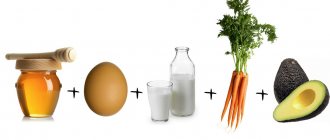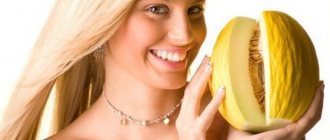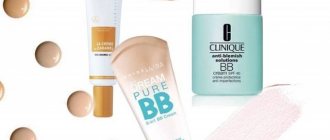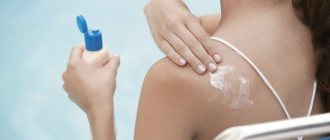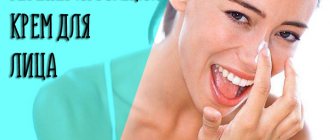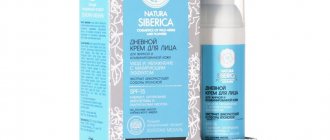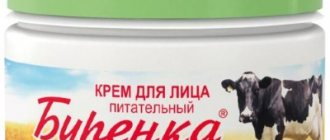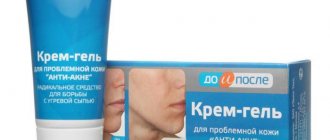The use of cosmetic masks is a very effective method in the fight against age-related changes and inflammatory processes on the skin. Using masks is an additional way to care for your face, neck, scalp and hair. Together with the use of tonics, milk, various types of creams, masks have a positive effect on the appearance of the skin, tighten it, moisturize and nourish it. The composition of cosmetic masks depends primarily on the type of skin, as well as the focus on combating a particular problem. You need to carefully monitor the selection of the right and high-quality ingredients for masks.
Types of cosmetic masks
Types of cosmetic masks have several classifications. Before composing and applying the mask, you should determine your individual skin type. This is what should be taken as a starting point when drawing up a preventive or treatment program.
It is important to pay attention to the fact that ingredients that have a positive effect on oily skin may have the opposite effect on dry skin. You should not buy a mask that claims to be suitable for all skin types.
Owners of different skin types face different problems, each of them has a characteristic manifestation.
There are several types of masks depending on their purpose.
Cleansing
Masks free the skin from dead cells, unclog pores, and remove blackheads. To make this mask, different types of clay, mud, peat and sea silt are used. A type of cleansing mask includes peelings, which contain crushed particles of various components, for example, apricot kernels, coffee or pumice.
Moisturizing
Masks restore the skin's water balance. They contain components that promote cell regeneration and the resumption of active collagen production. These are lactic and hyaluronic acid, plant extracts, collagen of various origins.
See also
Exceptional acne masks
Nutritious
Masks nourish the skin with beneficial substances, supplying it with all the necessary vitamins, macro and microelements. The composition of such masks often includes honey, vegetable oils, and products containing vitamins A and E.
Anti-aging
Masks tighten the skin, smooth out wrinkles, and give the face elasticity and firmness. The components included in the composition restore the skin and promote the regeneration of epidermal cells. These are various proteins, vitamins, plant extracts, amino acids.
Whitening
The masks are aimed at combating age spots and improving the appearance of the skin. The masks contain various types of clay, vitamin C and E, zinc, sulfur, and retinol.
Calming
Masks soothe the skin and relax the facial muscles. The masks contain medicinal herbs: chamomile, lavender, linden, jojoba, cornflowers.
If the composition of the mask is correctly selected for your skin type, you won’t have to wait long for a noticeable result and an improvement in the appearance of your skin.
Conclusion
Now you know how to choose a moisturizing cream for your face so as not to make a mistake. Pay attention to the active composition, the components contained in the maximum concentration, which will be at the beginning of the list on the label, the effectiveness will depend on them. It is also important that skincare products do not contain parabens and harmful substances that can negatively affect the health of the skin, especially when it comes to sensitive skin and prone to rashes. And the best moisturizing cream for the face - reviews from customers and experts will definitely allow you to choose!
Adding Common Ingredients to Masks
Industrially produced masks differ in many ways from homemade masks. If when preparing it yourself, only natural ingredients are used, then the composition of industrial masks is more chemical.
Industrially produced cosmetic masks contain preservatives that preserve microorganisms. They provide effective nutrition to the skin when applying the mask. Masks are sold in the form of powders for home preparation, as well as in the form of ready-made mixtures.
In order for the mask to harden, minerals, water-soluble polymers, latex emulsions, and wax mixtures that require preheating are added to its composition.
Components of face masks:
- Fatty and constricting substances;
- Herbal juice;
- Processed herbs;
- Egg yolk;
- Honey;
- Bran;
- Oatmeal flakes;
- Chopped vegetables and fruits;
- Dairy products;
- Essential oils.
The list of ingredients is far from complete. Masks can combine plant, mineral components and natural polymers.
Manufacturers
Manufacturers of face masks produce cosmetic products in three segments:
- professional;
- luxury;
- mass market.
Professional products are popular among cosmetologists. These include brands:
- Collistar;
- Holy Land;
- Oligodermie;
- Mediderma
- Keenwell;
- AmaDoris;
- Janssen;
- Laboratories Hevicosm.
Manufacturers of luxury segment mixtures include the following companies:
- Dior;
- Valmont;
- Shiseido;
Cosmetic care products from the mass market category are cheaper, but they bring less effect, and in addition, they often cause side effects.
Advertising from sponsors: // // //
Film mask: composition of a cleansing mask
Today, film masks have become widespread. This type of mask is easy to use and effective.
Film masks, used regularly, help get rid of dead skin cells, blackheads, irritations and rashes. Film masks tighten the skin, smooth out wrinkles, and add elasticity and firmness.
The composition of the mask may vary depending on what skin type it is intended for. Therefore, when purchasing, first of all, you need to pay attention to the suitability of the mask for your skin type.
See also
Sensational sperm mask and its benefits
List of ingredients included in the mask:
- Gelatin. It opens clogged pores, drawing out impurities from there.
- Activated carbon. Provides deep penetration into pores, cleanses them, removes toxins, relieves inflammation, effectively fights acne and blackheads.
- Egg yolk and white. Nourishes the skin with beneficial substances. Protein narrows enlarged pores and tightens facial skin.
Masks can contain fresh berries, fruits, decoctions of vegetables and herbs, which provide the skin with all the necessary components and make it beautiful and healthy.
Many people are wary of this type of mask, as it requires proper application and removal from the facial skin. These masks are easy to use. The most important thing is strict adherence to the rules written in the instructions for use.
Calendula Serum-Infused Water Cream, Kiehl's
This lightweight gel-cream is a sequel to Kiehl's iconic Calendula Toner.
The new product is sealed with a water-based concentrate enriched with micronized calendula petals and a high concentration of calendula flower extract. When it hits the skin, it immediately moisturizes it, energizes it, restores the protective barrier, soothes, evens out tone and gives a healthy, fresh, radiant look. And this effect lasts all day! Intensively moisturizing SOS face cream Vinosource, Caudalie
This refreshing cream with a delicate silky texture is suitable even for the most sensitive skin, because it removes irritation and redness and begins to act from the very first minutes it is applied to the face. Vinosource envelops the skin with moisture, eliminating the feeling of tightness and discomfort. And one cannot fail to note its divine aroma: bergamot, tangerine, mint and lemon tree leaves charge you with energy for the whole day.
Medicinal herbs in a mask: types and rules of use
Various types of herbs in masks have a beneficial effect on the skin, restoring its youth, beautiful appearance and stopping the aging process of cells. The types of herbs included in the masks are intended for different skin types.
Use of herbs depending on skin type:
- Dry. You will need: chamomile, sage, mint, lemon balm, linden, hops, rose, parsley.
- Fatty. You can add to the composition: oak bark, serpentine, St. John's wort, chamomile, wormwood.
- Combined. You will need: calendula, St. John's wort, sage, aloe, plantain, mint.
When choosing and making masks, it is important to follow the instructions, prepare the herbal infusion correctly, and monitor the exact amount of ingredients. Herbs have medicinal properties that effectively restore and heal the skin.
It is important to remember that improper use of herbs can lead to dire consequences. Herbs can either help combat skin problems or make the situation worse.
In any case, in order for the herbs to have the desired effect, you should follow simple rules in their preparation and use in masks.
See also
Mask made of honey, starch and salt: 4 ways to preserve youth
Mistakes when applying face cream in the summer
There are a number of mistakes made when using face cream. With such violations, you can either get no effect at all or cause harm to the skin. Here are the most common errors:
- Lack of consultation with a doctor. This is necessary to identify the characteristics of the body and the absence of allergic reactions. After all, each person has their own skin characteristics. And we cannot, without the help of a specialist, predict the behavior of our epidermis in the hot summer, accompanied by sudden changes in indoor temperature.
- Lack of constant use. Yes, excessive use of face cream will not lead to anything good. But using it in small quantities daily provides protection. Therefore, it is worth introducing the use of cream into your daily care and just know when to stop.
- Regular application of foundation. In summer, you should limit the use of foundation. Despite the fact that face cream protects pores from pollution, foundation reduces its effect. This damages the epidermis. Therefore, in the summer, it is better to give up foundation and show the world your healthy and natural beauty.
Herbal face masks (video)
The composition of cosmetic masks depends on many factors. The amount and type of ingredients are influenced by the type of skin for which the mask is designed, the purpose and expected effect, and the type of production. In industrial production, both natural and chemical components are used: polymers and latexes. Preparing masks at home involves using only high-quality natural ingredients. The next task will be to make the right choice of composition for your skin type. You should carefully read the instructions and follow them strictly.
Peptides
Peptides are understood as organic substances consisting of amino acids. The main functions of the ingredient are maintaining cell activity, protecting and regenerating tissue, increasing resistance to oxygen deficiency and the effects of toxins. In practice, a cream with peptides has the following effect on the skin:
- smoothing out wrinkles;
- improvement of complexion;
- increased skin tone;
- slowing down the aging process.
Girls also use peptide-based products to make their facial contours clearer and more pronounced.
Natural Moisturizing Factor
Natural moisturizing factor (NUF, NMF) is a complex of various components located in the stratum corneum of the epidermis and having the ability to attract and retain moisture. If lipids and derivatives (cholesterol, keratin) are located deep in the skin and prevent moisture evaporation and provide “protective lubrication” on the surface, then the components of the natural moisturizing factor moisturize the skin and are responsible for metabolic processes.
NMF components are highly effective humectants that attract and bind water from the atmosphere, drawing it into the corneocytes (Fig. 1).
Rice. 1 Components of NMF in the skin (photo from www.infosites.mims.com)
Hydrated NMF (especially neutral and basic amino acids) forms ionic interactions with keratin fibers, reducing intermolecular forces between fibers and thus increasing the elasticity of the stratum corneum. This elasticity serves to keep the skin looking healthy and firm and to prevent cracking or peeling due to mechanical stress. In addition, NMF allows corneocyte cells to balance osmotic pressure. Maintaining balanced solute concentrations is important to prevent excessive water influx or efflux, which can lead to corneocyte shrinkage [1].
The term “natural moisturizing factor” first appeared in English-language publications by Jacobi and colleagues in 1959 and was not universally accepted [1]. Many early articles referred to "naturally occurring humectants" or "hygroscopic water-soluble substances." In materials devoted to the study of the epidermis, the components of modern NSF were classified as “water-soluble compounds” or ingredients, the removal of which reduced the ability to bind to water [1].
Gradually, researchers working on this topic learned more and more about the component composition of NUF.
Water-soluble components of NUF:
- free amino acids and their derivatives (pyrrolidonecarboxylic acid (PCA), its salt, urocanic acid UCA - a natural filter against UV radiation);
- urea;
- inorganic salts (chlorides, phosphates and citrates of sodium, potassium, calcium and magnesium);
- lactic acid and its salts (lactates);
- glycerol;
- complex of sugars, organic acids, peptides;
- glucosamine/creatinine.
Free amino acids are formed during the enzymatic breakdown of filaggrin protein in the stratum corneum of the skin. Filaggrin is the main protein involved in the differentiation of epidermal cells and its barrier function.
Filaggrin is responsible for the formation of bonds between keratin fibers, as a result of which they line up in ordered linear structures.
The level of NUF can decrease due to a decrease in the production of filaggrin (and, accordingly, degradation products - components of NUF); with excessive contact with water and exposure to ultraviolet light [1] are observed in problems such as psoriasis, ichthyosis and general xerosis, which in some cases is a consequence of a mutation in the gene encoding filaggrin. Environmental changes and older age can also lead to decreased levels of NUF.
Sources
- Fowler J. Understanding the Role of Natural Moisturizing Factor in Skin Hydration // Practical dermatology. July 2012. pp. 36–40
- https://skin.ru/ingredient/mochevina
- Urea: what it can do and why it is a very important component in cosmetics // Zen.yandex.ru/media/beautyviewer. 2020. September 19. URL: https://zen.yandex.ru/media/beautyviewer/mochevina-na-chto-ona-sposobna-i-pochemu-eto-ochen-vajnyi-komponent-v-kosmetike-5ba23924df331200ad41ad58
- Cream with urea for the face in a pharmacy and its beneficial properties // Zen.yandex.ru/media/faceandcare. 2020. September 3. URL: https://zen.yandex.ru/media/faceandcare/krem-s-mochevinoi-dlia-lica-v-apteke-i-ego-poleznye-svoistva-5b8d34e5e3cd4f00aad666f9
- https://ecogolik.ru/sostav_kosmetika/glitserin
- Joachim W. Fluhr, A. Bornkessel, E. Berardesca. Glycerol – Just a Moisturizer? Biological and Biophysical Effects // Dry Skin and Moisturizers: Chemistry and Function. URL: https://www.scientificspectator.com/documents/personal%20care%20spectator/Glycerol%20a%20Moisturizer.pdf
- https://haircolor.org.ua/ingredienty-kosmetiki/186-glitserin-glycerin.html
- https://www.mycharm.ru/post/18206
- Lozovskaya E. Nobel Prizes 2003. Membrane channels: water is separate from ions, and ions are from each other // Science and life. – 2003, No. 12. pp. 14–15. URL: https://www.nkj.ru/archive/articles/3720
- Krysova A.V., Tsirkin V.I., Kunshin A.A. The role of aquaporins in the transport of water through biological membranes.// Vyatsky Medical Bulletin, 2012. URL: https://cyberleninka.ru/article/n/rol-akvaporinov-v-transporte-vody-cherez-biologicheskie-membrany
- https://www.myeucerin.ru/our-research/behind-the-science/aquaporin
